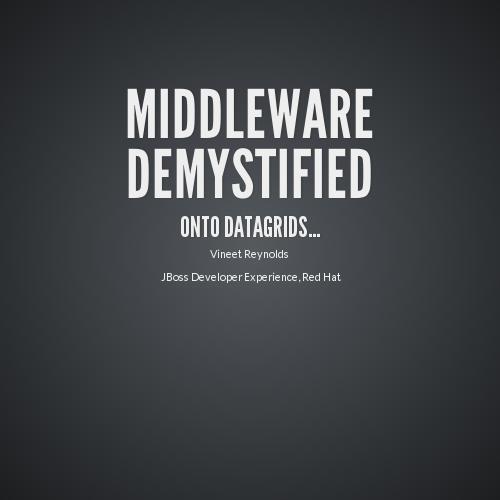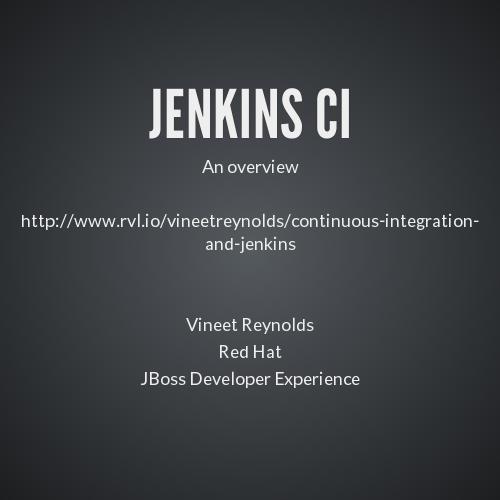Middleware demystified
What is this enterprisey sounding thing?
Vineet Reynolds
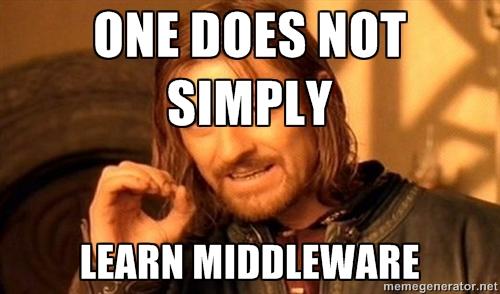
Agenda
- Introduction to middleware
- An overview of Message Queues
- Impact on storage
Heads Up
Middleware is software that wires up discrete systems capable of independent operation.
We'll discuss Message-oriented-middleware here.
Scenario #1
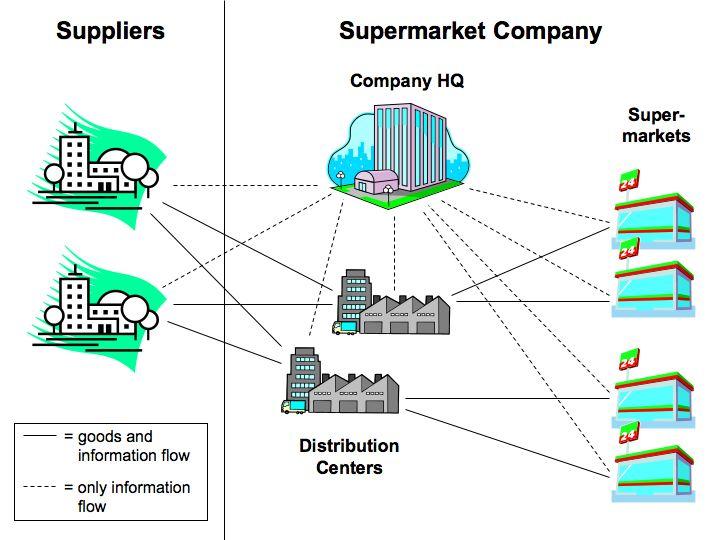
Source: SPECjms 2007
- Order/shipment handling between Supermarkets and Distribution Centers.
- Purchase order/shipment handling between Distribution Centers and Suppliers.
- Price updates sent by Headquarters to the Supermarkets.
- Supermarket inventory management.
- Sales statistics collection.
- New product announcements.
- Distribution of credit card hot lists.
There are multiple systems at work here. Not just ONE.
Why is this architected this way?
Each constituent system/module has a different responsibility.
-
Building capabilities to assume new responsibilities in an existing system:
- cost time, money etc. with the risk of budget overruns
- encourages monolithic architectures and the disadvantages that come with them
- increases coupling
- increases complexity
Speaking of integration
You could integrate systems together using RPC, shared memory, files etc. But...
Messaging oriented middleware
-
MoM involves the use of Message passing that in turn:
- reduce coupling
- allows systems to evolve in isolation
- ensure compatibility via APIs or message formats
- allows messages to be stored until they're processed
- typically offers transactional guarantees
- allows systems to communicate asynchronously
Message channels - the pattern
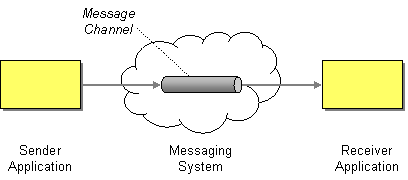
- Generally, one application writes to the channel, while another reads from it.
- Note - cases involving multiple producers and consumers are not covered (yet)
Reference: Enterprise Integration Patterns, Gregor Hohpe and Bobby Woolf
Message Queues
- Offer multiple point-to-point and/or publish-subscribe channels.
- They form the staple of most system integrations.
- Not to be confused with POSIX queues (and other OS provided queues).
- Provides primitives for clients to enqueue and dequeue messages often in a durable manner with transactional guarantees.
- Usually offer delivery guarantees (a message is delivered only once).
Point-to-point messaging pattern

- Ordering guarantees - FIFO
- Delivery guarantees - Only once
How does P2P messaging affect storage?
- Messages once sent by a producer should not be lost.
- Often backed by filestores, or even OLTP databases.
- The choice is dictated by reliability concerns.
- Messages can be stored in memory, but often as an optimization.
Performance concerns ...
- Apps may expect low latency reads and writes with high reliability.
- Reads and writes are usually synchronous and transacted.
- In reality, this depends on the type of sessions established by the clients.
- Messages may be fetched from disk for consumption.
Availability concerns ...
- Message stores will be backed up.
- Backups can be either online or offline.
- Queues may operate in a HA mode where messages are replicated (split-brain scenarios are possible).
Other concerns ...
- Producer flow controls may exist for overfilled queues.
- Disk quotas may be established for queues, usually for flow control.
- Message sizes. Large messages (order of MBs) are possible. Message sequencing will be employed to partition messages as sequences.
Publish-subscribe messaging pattern
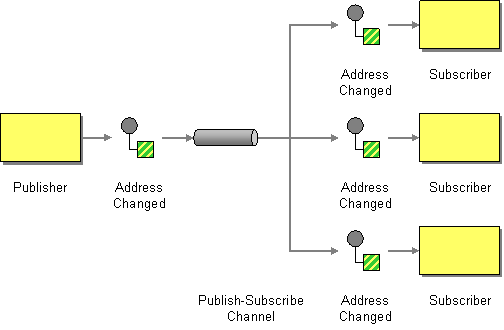
- Delivery guarantees - Only once for every consumer
- Subscribers receive messages after subscribing to the channel
Storage concerns ...
- The same as for P2P, but also :
- Transacted consumptions are relatively more disk-intensive. Depends on the number of subscribers.
- Messages can be persisted for a long duration for durable subscribers to consume, after periods of disconnectedness.
Questions ?
Middleware demystified - Queues
By vineetreynolds
Middleware demystified - Queues
- 1,184
